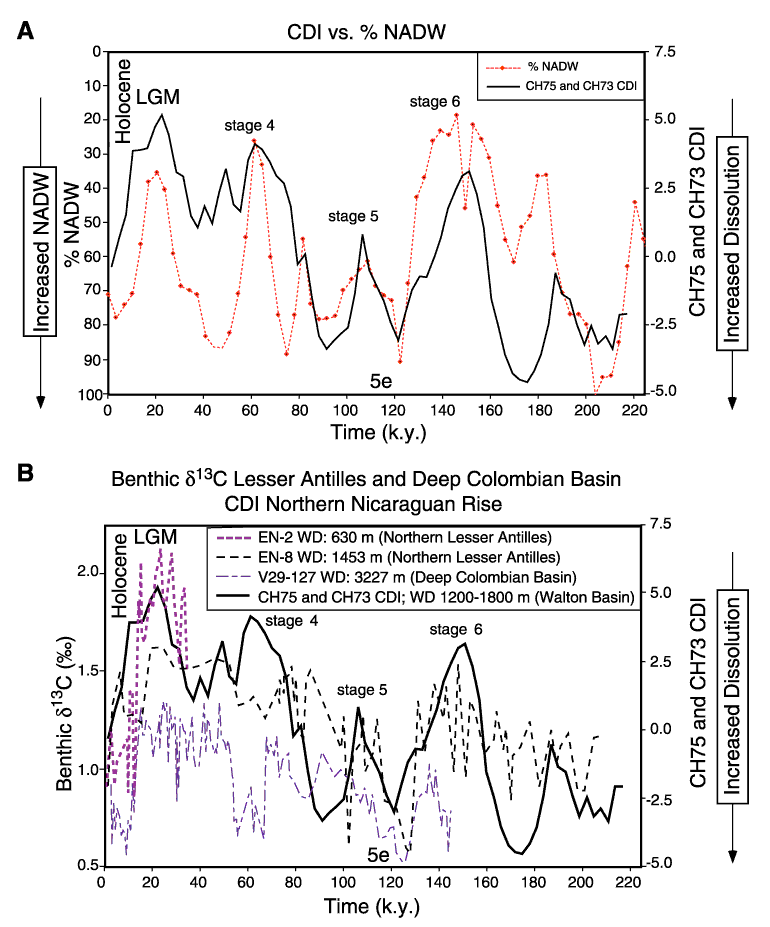Figure 16.
A. Correlation between fluctuation of North Atlantic Deep Water
(NADW) production (from Raymo et al., 1990) and a carbonate composite
dissolution index (CDI) from Walton Basin on the northern Nicaraguan Rise during
the late Quaternary (Haddad, 1994; Haddad and Droxler, 1996). Note that maximum
NADW production during the Holocene and last interglacial Stage 5e correlates
with dissolution peaks in the Caribbean when the more corrosive Antarctic
Intermediate Water flowed through the Caribbean. This late Quaternary
interglacial scenario could illustrate the oceanographic setting in the
Caribbean during the carbonate crash at the middle to late Miocene transition.
On the other hand, the last glacial maximum (LGM) and previous glacial intervals
are associated with dramatic reduction of NADW production and maximum carbonate
preservation. This late Quaternary glacial scenario is a good illustration of
the oceanographic setting prior to the Caribbean carbonate crash in the middle
Miocene. B. Correlation between several benthic ![]() 13C
records (Shearer et al., 1995; Oppo and Fairbanks, 1990) from subthermocline to
abyssal depths in the Caribbean Basins and the carbonate CDI (see A; Haddad and
Droxler, 1996). Lighter
13C
records (Shearer et al., 1995; Oppo and Fairbanks, 1990) from subthermocline to
abyssal depths in the Caribbean Basins and the carbonate CDI (see A; Haddad and
Droxler, 1996). Lighter ![]() 13C
values correspond to interglacial carbonate-dissolution intervals (Holocene and
Stage 5e) when NADW was at its maximum and AAIW was flowing through the
Caribbean basins. The LGM was a time of heavy
13C
values correspond to interglacial carbonate-dissolution intervals (Holocene and
Stage 5e) when NADW was at its maximum and AAIW was flowing through the
Caribbean basins. The LGM was a time of heavy ![]() 13C,
maximum carbonate preservation, and minimum NADW production. EN = Endeavour; CH
= Cape Hatteras; WD = water depth.
13C,
maximum carbonate preservation, and minimum NADW production. EN = Endeavour; CH
= Cape Hatteras; WD = water depth.

![]()